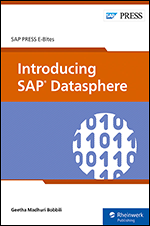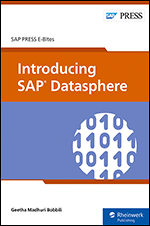Delivering Business Intelligence with Microsoft SQL Server 2016, Fourth Edition
- 10h 16m
- Brian Larson
- McGraw-Hill/Osborne
- 2017
Drive better, faster, more informed decision making across your organization using the expert tips and best practices featured in this hands-on guide. Delivering Business Intelligence with Microsoft SQL Server 2016, Fourth Edition, shows, step-by-step, how to distribute high-performance, custom analytics to users enterprise-wide. Discover how to build BI Semantic Models, create data marts and OLAP cubes, write MDX and DAX scripts, and share insights using Microsoft client tools. The book includes coverage of self-service business intelligence with Power BI.
- Understand the goals and components of successful BI
- Build data marts, OLAP cubes, and Tabular models
- Load and cleanse data with SQL Server Integration Services
- Manipulate and analyze data using MDX and DAX scripts and queries
- Work with SQL Server Analysis Services and the BI Semantic Model
- Author interactive reports using SQL Server Data Tools
- Create KPIs and digital dashboards
- Implement time-based analytics
- Embed data model content in custom applications using ADOMD.NET
- Use Power BI to gather, model, and visualize data in a self-service environment
About the Author
Brian Larson (Arden Hills, MN), MCSD, served as a member of the Reporting Services development team on a contract basis, and has contributed to the code base. He is the Chief Creative Officer for Superior Consulting Services (SCS) in the Twin Cities. SCS is a Microsoft Certified Partner and is currently developing many client solutions that use Microsoft BI tools. Brian has been invited to speak on BI topics at several conferences including the PASS Summit, is a SQL Server Pro IdeaXchange Xpert, and has written articles and produced training videos for SQL Server Magazine.
In this Book
-
Equipping the Organization for Effective Decision Making
-
Making the Most of What You've Got—Using Business Intelligence
-
Seeking the Source—The Source of Business Intelligence
-
Two, Two, Two Models in One—The BI Semantic Model
-
First Steps—Beginning the Development of Business Intelligence
-
Building Foundations—Creating Data Marts
-
Transformers—Integration Services Structure and Components
-
Fill'er Up—Using Integration Services for Populating Data Marts
-
Setting the Table—Creating a Tabular BI Semantic Model
-
A Fancy Table—Tabular BI Semantic Model Advanced Features
-
Cubism—Measures and Dimensions
-
Bells and Whistles—Special Features of OLAP Cubes
-
Writing a New Script—MDX Scripting
-
Pulling it Out and Building it Up—MDX Queries
-
Power to the People—Loading Data with Power BI
-
I Can See Clearly Now—Data Visualization with Power BI Reporting
-
Special Delivery—Microsoft Business Intelligence Client Tools
-
Let's Get Together—Integrating Business Intelligence with Your Applications




